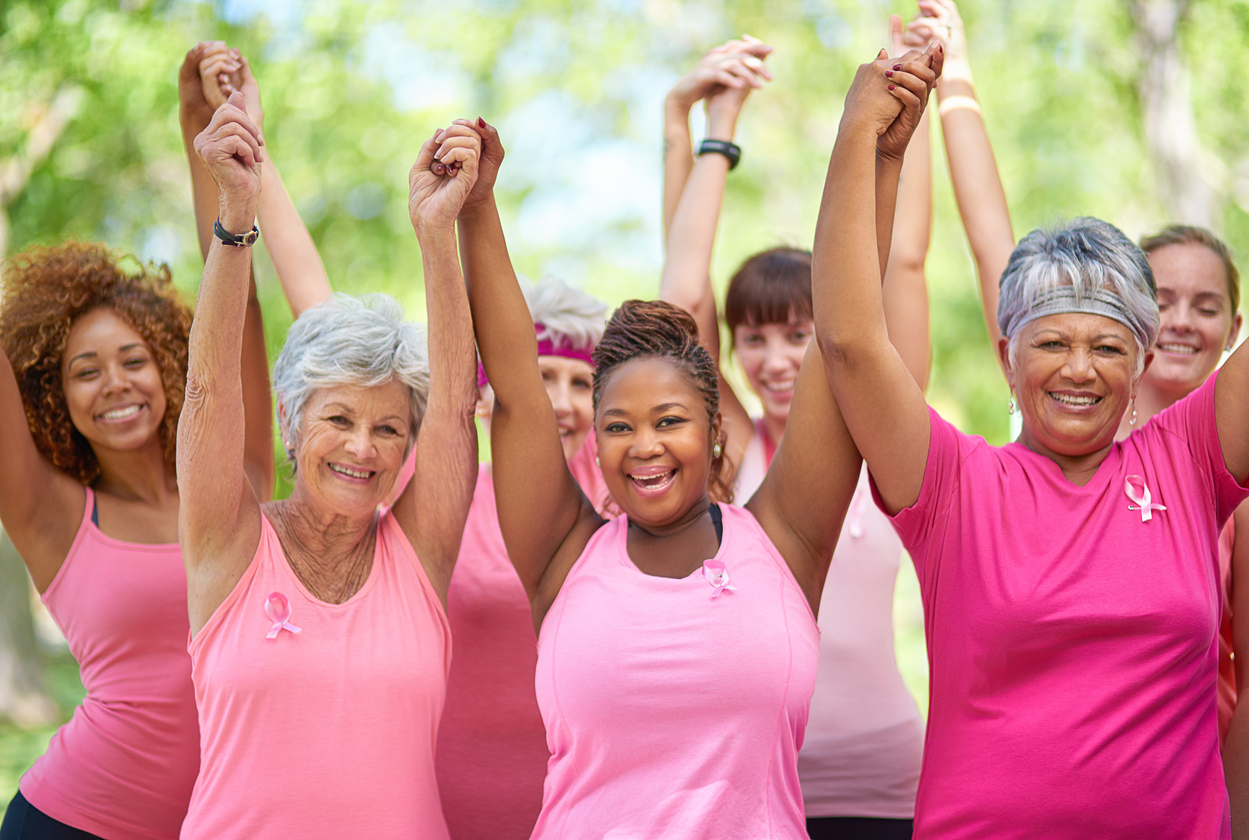October is Breast Cancer Awareness Month, so what better time to talk about prevention? You’ve probably heard that about 1 in 8 women will develop breast cancer sometime in her lifetime. Thirty percent of women diagnosed with cancer will be diagnosed with breast cancer. Those are pretty high and scary statistics! The good news is that there are plenty of things you can do to cut your risk.
Genes: Five to ten percent of breast cancers are linked to gene mutations such as BRCA-1 and BRAC-2. A woman with the BRAC1 mutation has about a 55-65% risk of being diagnosed with breast cancer in her life. No, you can’t change your genes. But you can be more vigilant about screening and about taking other preventative steps, as outlined below, seriously. Find more info about genetics and breast cancer here.
Get Pregnant: If you have a choice, try to have your first child before age 30. Why? Women who don’t, have a higher risk of breast cancer.
Breastfeed: According to the American Institute for Cancer Research and World Health Organization, breastfeed exclusively for at least six months to reap the benefits of cancer prevention. One study showed that for every 12 months a woman breastfed, she cut her risk of breast cancer by 4%. Another study reported that women who breastfed for more than 13 months were 63% less likely to develop ovarian cancer than women who breastfed for less than 7 months. Because breastfeeding can help prevent your child from being overweight later in life, it can also cut their cancer risk.
Maintain a healthy body weight: Being overweight can increase the risk of being diagnosed with breast cancer—and can also increase the chance of recurrence. See my previous Plaid post: Eating What’s Right for You!
Sit Less: Did you know that sitting too much can actually increase your risk of cancer, even if you exercise regularly? (While sitting too much specifically raises your risk for colorectal, ovarian, and endometrial cancer, it also increases your risk for obesity, which is a risk factor for breast cancer. If you tend to get carried away sitting while working or reading, invest in a FitBit or other gadget that reminds you to get up and walk every hour. (Yep I’m wearing one right now, and it’s definitely helped motivate me to get up and move!)
Exercise More: Exercising regularly for 4-7 hours a week has been linked to a lower risk of breast cancer. Even women who are diagnosed with breast cancer should strive to get 4 to 5 hours a week of exercise to reduce the risk of developing new cancers.
Stop Smoking: Smoking is linked to many types of disease but especially to a higher risk of breast cancer in premenopausal women. Unfortunately, even if you don’t smoke, heavy secondhand smoke may be linked to a higher risk of breast cancer in postmenopausal women.
Rethink Your Drink: And I’m not talking about sugary sodas! A large study analyzing 119 studies, found evidence that drinking an average of just 10 grams of alcohol a day, increased the risk of pre-menopausal breast cancer by 5% and post-menopausal cancer by 9%.
![Thirty percent of women diagnosed with cancer will be diagnosed with breast cancer. [...] The good news is that there are plenty of things you can do to cut your risk.](https://www.plaidforwomen.com/wp-content/uploads/2018/09/Quote_BSwinney-1-200x300.png) Think Pink, Live Green: Endocrine disrupting chemicals—like parabens and phthalates added to products you use every day, like lotion, makeup, air freshener, mousse, and shampoo are thought to increase cancer risk. See my post: Pregnant? Steer Clear of Environmental Chemicals for great tips you can use even if you’re not pregnant. You can download Think Pink, Live Green brochure with info about cutting your cancer risk from BreastCancer.org. Scope out the recent science on environmental chemicals and breast cancer here.
Think Pink, Live Green: Endocrine disrupting chemicals—like parabens and phthalates added to products you use every day, like lotion, makeup, air freshener, mousse, and shampoo are thought to increase cancer risk. See my post: Pregnant? Steer Clear of Environmental Chemicals for great tips you can use even if you’re not pregnant. You can download Think Pink, Live Green brochure with info about cutting your cancer risk from BreastCancer.org. Scope out the recent science on environmental chemicals and breast cancer here.
Eat a Healthy Diet: Last but not least, here’s something you can really sink your teeth into! Diet alone is thought to be responsible for 30-40% of all cancers! The number one thing you can do is fill half your plate with fruits and or veggies; try for at least 5 cups of fruits and veggies daily. See my post Eat More Veggies-Shopping & Cooking and 13 Ways to Eat More Veggies. Eat a variety of protein, including meatless meals, at least a few times each week. Cut trans fat from your diet and limit saturated fat by using lower fat diary products, trim fat from meat and fish and poultry.
Get enough Vitamin D: Sure, vitamin D’s job one is for healthy bones, right? But it’s also important for your immune system and research suggests that women with low levels of vitamin D have a higher risk of breast cancer. Get your vitamin D checked and check with your doctor about how much vitamin D3 to take if it’s low.












